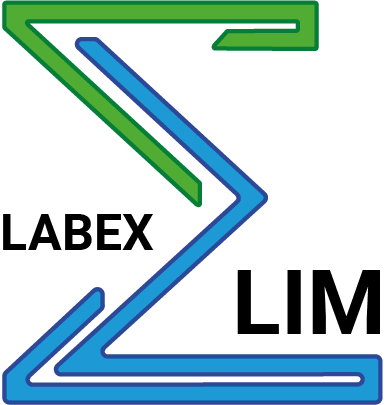Doing more with less energy
Design high-performance materials in terms of insulation, eco-compatibility and energy footprint, integrate devices with specific functionalities into monolithic network nodes of WSN in sustainable and green buildings or vehicles.
![]()
Energy issues are addressed through the main topic of wireless sensor networks (WSN) and according to two main axes:
- Device axis aims to integrate new materials and processes into the following devices or sub-systems: environmental energy harvesting and storage micro sources for autonomous WSN, antennas and reconfigurable antennas including smart materials for switching (phase transition materials).
- Software axis with the main goal to minimize energy balance of deployed on-site commercially available sensor network. The strategies used were compressive sensing and/or switching from RF to optic according to the sensor configuration.
On the basis of the results obtained since 2011, several researches are conducted in order to integrate device functionalities into monolithic network nodes and integrate the WSN in sustainable and green buildings or vehicles conceived with performing materials in term of insulation, eco-compatibility and energy footprint. In this respect, two challenges are identified: going towards sustainable development of materials and processes and, continuing actions on WSN integration and energy monitoring.
By leveraging IRCER’s expertise on materials and XLIM’s on electrical/optical compatibility, teams are working on systems and processes in order to propose eco-construction solutions or vehicle with energy saving and compatible with WSN integration.
-
Materials and systems for energy saving
Eco-construction: In line with the EU Energy Efficiency Directive (EED) and the European Performance of Buildings Directive (EPBD), development of low carbon foot print and durable materials which require less energy for their processing, as well as innovative solutions for recycling and valorize construction and demolition waste are needed.
Vehicles: Development of new materials and environmental barrier coatings, especially at nanoscale, by either suspension or solution plasma spraying to create surfaces or layers with low friction coefficient, high wear resistance, low thermal conductivity. All these properties are the key issue for energy saving, mainly by reducing consumption, as for example in gas turbines, by increasing the temperature in the combustion chamber, and indirectly, by reducing friction in the mechanical systems.
-
Materials and systems as new energy vectors
Due to the problem of global warming and the future lack of fossil fuels, hydrogen is expected to become a key clean energy vector in a short future. In this context, researches follow 2 axes related to the production (Steam Methane, Reforming, Water Splitting…) and exploitation of hydrogen and its derivatives as an energy source (PEM, SOFC…)
-
Low carbon foot print and durability for materials, processes and devices
This topic concerns energy saving from the point of view of carbon footprint, using green or waste recycled materials in construction, minimizing scarce or dangerous materials in devices (lead suppression in piezoelectric materials, green solvent for organic electronics…). Two approaches are proposed concerning the device architecture, like” Small form factor devices based on green materials” or using additive technologies such as 2D/3D printing for material saving.
This challenge aims to go on the efforts on energy management devices and software.
-
Innovative materials for sensors
There is a growing demand for smart materials integrated in new device generation, such as sensor and wireless detection systems (antenna), micro source for powering WSN nodes, light emitters and receptors… These materials can demonstrate a phase change transition upon light, heat or electrical perturbations. They can be used as active part of the devices (switches) or as interfaces with controlled and reconfigurable optical and electrical properties. The research is mainly focussed on chalcogenide glasses, metal oxides, perovskite oxides, nano-texturing of materials and compatibility with electronic processes.
-
Hybridizing energy harvesting and storage
Solar cells, which fulfill energy requirement for sensor nodes, have been fabricated by printing technologies. Micro batteries are under development and processes have to be developed in order to integrate both harvesting and storage of light energy (solar or indoor lighting) in a monolithic device that can be connected to any sensor node. Moreover, electronic monitoring of such device has to be studied. Early phase studies for energy harvesting sources (RF, thermoelectricity and piezoelectricity) are explored. In this context, efficient thermoelectric generators (TEG) based on organic/inorganic hybrid active materials printed on paper by inkjet printing are elaborated and characterized.
-
Secure and energy efficient data processing and transmission (hardware/software)
According to Gartner, the number of connected objects now exceeds the human population by a factor of three.
These large amounts of data are a challenge not only for their processing, security, analysis and visualization, but also for energy costs. A substantial energy saving can be achieved thank to the Compressive Sensing technique and to smart data processing. The latest advancements found in the literature show an effort on the analysis and modelling of the sparsity structure of the signals. Challenges to address are to determine an optimal deterministic measurement matrix, to determine how to encrypt measurements without additional energy cost and to investigate, beyond the linear formalism of compressive sensing, how the parametric modelling of the measured process can be exploited to reconstruct the signal so at least as efficiently as the linear compression.
Members
About 50 permanent members of IRCER and XLIM are partially or fully involved in this flagship.
Activities
- Eco-construction and mobility
- Energy and sustainable development
- Advanced energy managementestion

